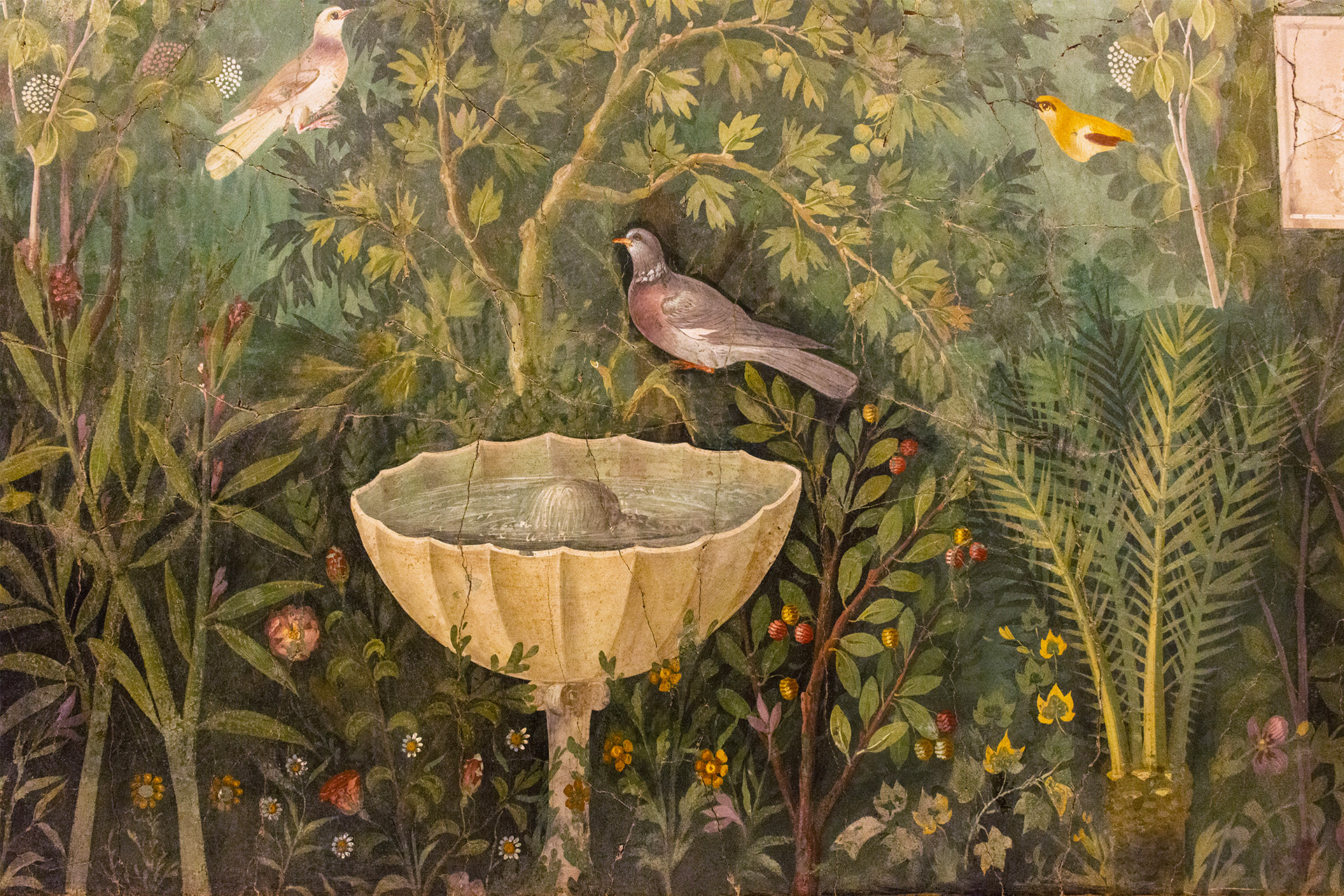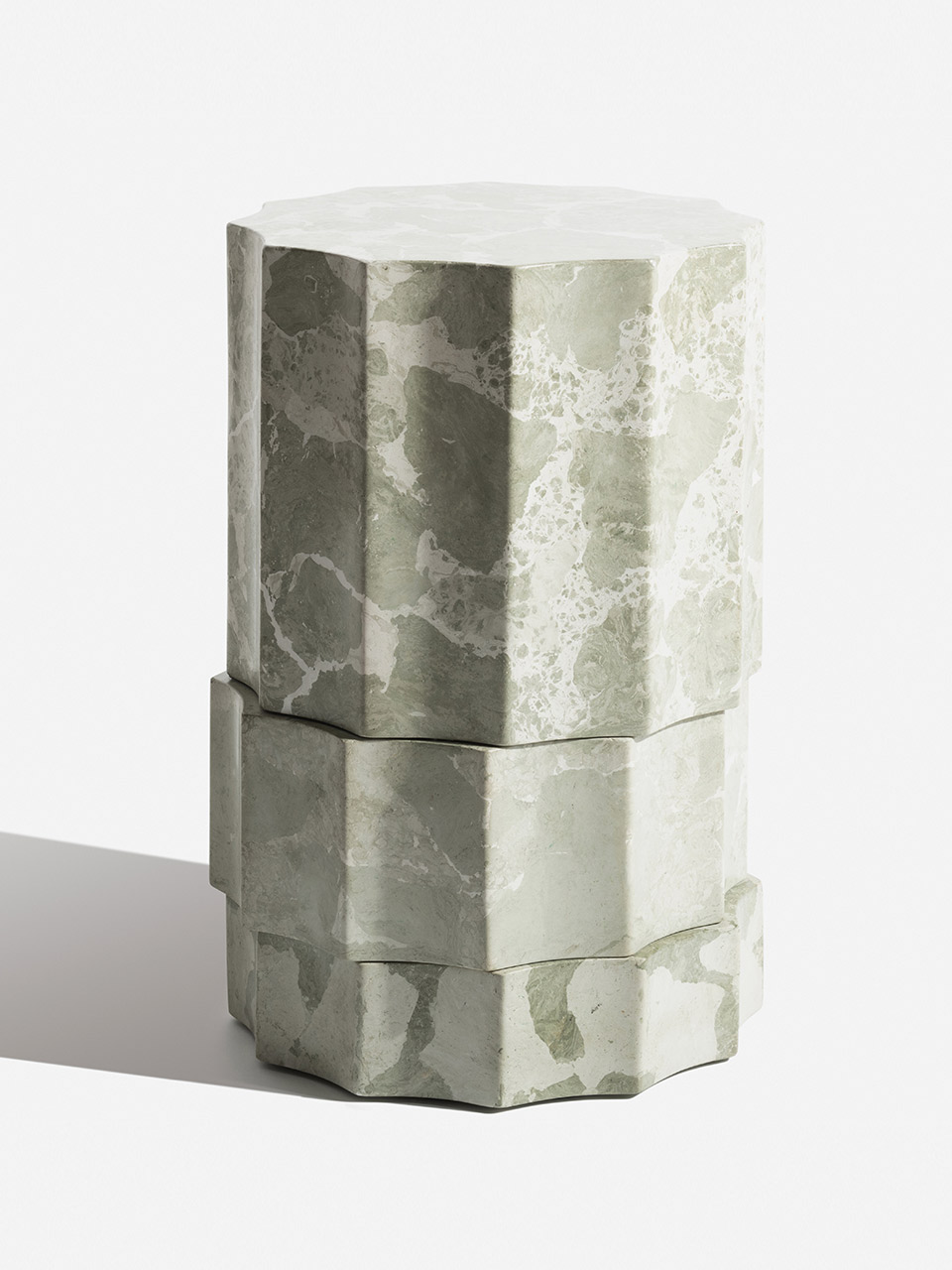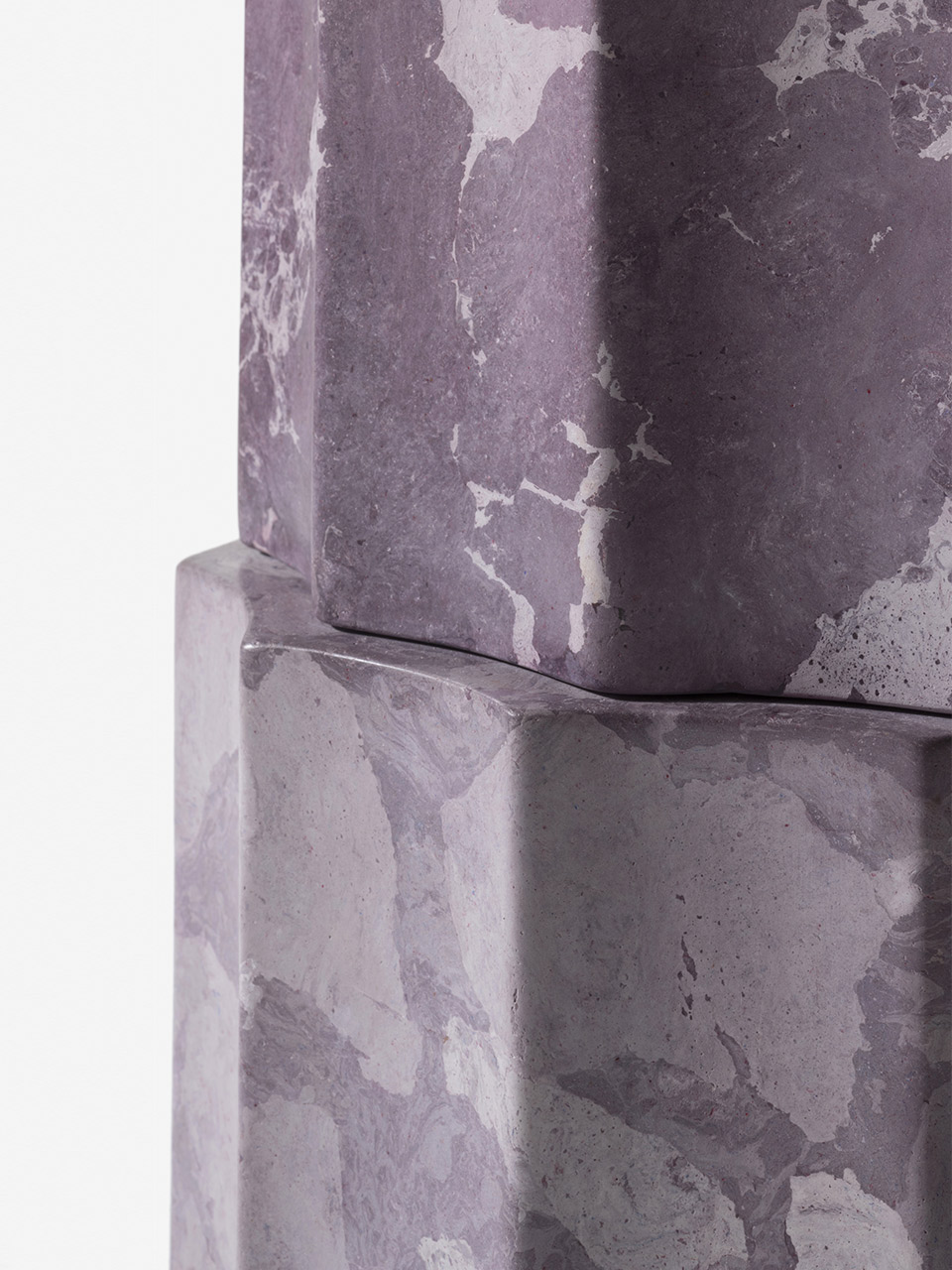

Rediscovered in 1748, after being buried for almost two millennia under a blanket of lava and ash following the eruption of Vesuvius, Pompeii redefines our relationship with the past through its generative potential between reality and imagination.
Defined by Goethe “An incredible place, worthy of peaceful thoughts”, Pompeii has the power to transform inanimate archaeological material into narrative matter, merging past and present in a relationship of reciprocity and interaction.

Exploring the site, today as then, it is possible to admire the interiors decorated with frescoes that reproduce architectural partitions or that tell stories of myths and divinities, in rooms set up with marble elements that the owner used to display his most precious objects.
The Pompeian frescoes were made according to different techniques with colors obtained from earth and minerals such as cinnabar (Pompeian red), ochres (Pompeian yellow), by oxidation processes of metals as in the case of cerulean or by the pulverization of roots and animal bones as in case of greens and blacks.



DOMUS POMPEII is a capsule collection of five side tables in Marmo di Rima, designed in dialogue with the architecture and chromatic-decorative techniques of Pompeii.
Marmo di Rima is a decorative technique created in Italy in the second half of the 19th century to simulate natural marble through a mixture (stucco) made with alabaster gypsum, water and mineral pigments. A technique in dialogue with that used by the decorators of the time, as Vitruvius describes in his VII book De Architectura, identifying the four different Pompeian styles: Primo Stile was developed through the simulation of architectural elements made of stucco with pigments diluted in water.



The project develops on the theme of the fluted column - one of the characterizing elements of Pompeian architecture - which is broken down and added together in a post-archaeological act in which the applied technique - Marmo di Rima - simulates the marbles used in the interiors of Pompeian Villas, where numerous varieties of marble from North Africa, the Greek Islands and Turkey have been found.



DOMUS POMPEII is designed around the concept of archaeological matter, where architectural, pictorial and material elements of archaeological matrix blend together with the aim of giving shape to the present in an infinite dialogue with the past. The colors, techniques, architectural materials of the Roman Pompeii are reworked and reinterpreted in a metamorphic process that results in the production of imagined archaeological artifacts.



Cosentino, Gabriella; Kastenmeier, Pia; Wilhelm, Katrin. The multiple lives of Pompeii. Surfaces and environments. Artem, 2021
Osanna, Massimo; Pesandro, Fabrizio; Toniolo, Luana. Pompei. Antiquarium.Electa, 2020
Borgongino, Michele. Archeobotanica. Reperti vegetali da Pompei al territorio vesuviano. Ediz. Illustrata.L’erma di Bretschneider, 2006
Maulucci, Francesco Paolo. Pompei. Cronache quotidiane. Delta, 2006
Ciarallo, Annamaria. Gardens of Pompeii. L’erma di Bretschneider, 2008
Pappalardo, Umberto. Affreschi romani. Arsenale, 2013
Giulerini, Paolo; Coralini, Antonella; Sampaolo Valeria. La pittura vesuviana. Una Rilettura. Picta Fragmenta. Silvana, 2020
Sauron, Gilles. La pittura allegorica a Pompei. Lo sguardo di Cicerone. Jaca Book, 2007.
Del Bufalo, Dario. Marmorari magistri romani. L’erma di Bretschneider, 2006
Pullen, Henry William; Crocenzi, Francesco. Manuale dei marmi romani antichi. Ediz. Illustrata. Gangemi, 2015
Bettini, M.; Pucci, G. Terrantica. Volti, miti e immagini della terra nel mondo antico. Mondadori Electa, 2015
Bandinelli, Ranuccio Bianchi. La pittura Antica.Ghibli, 2016